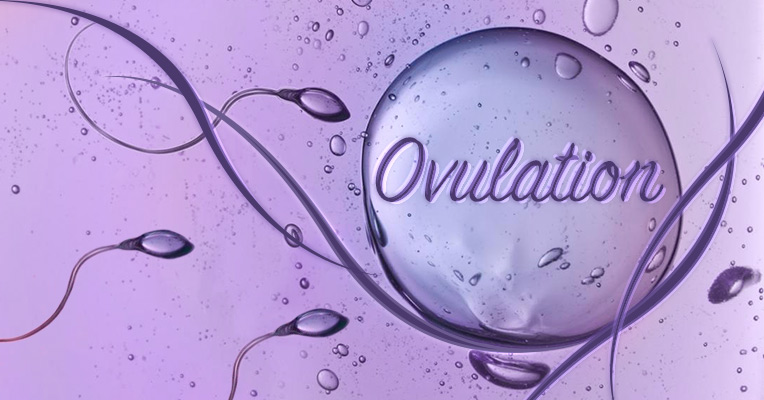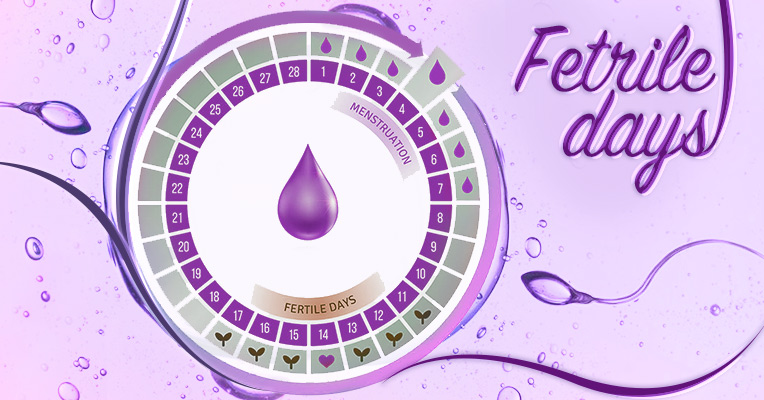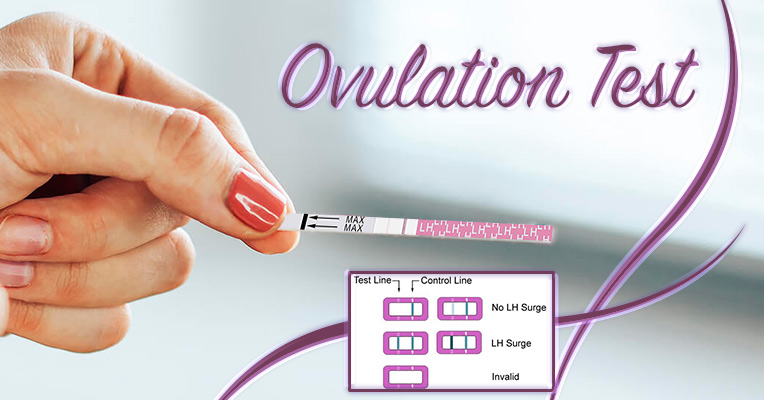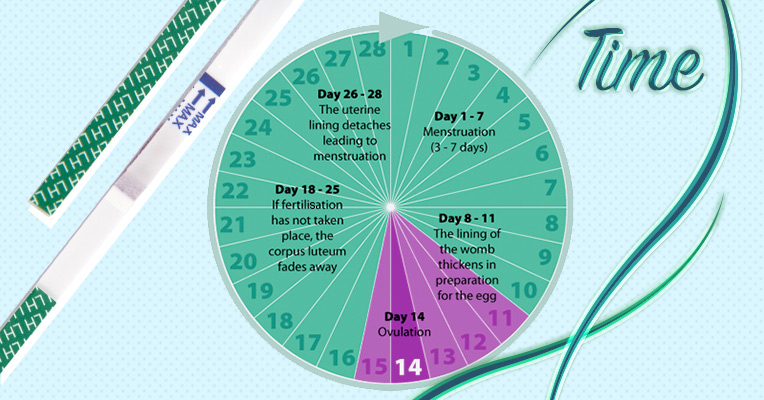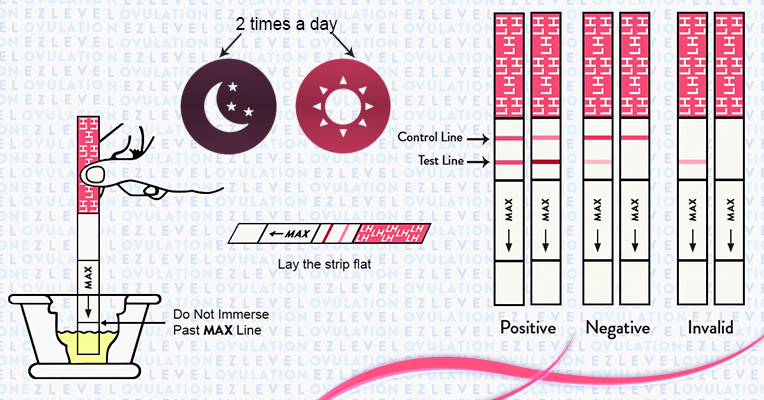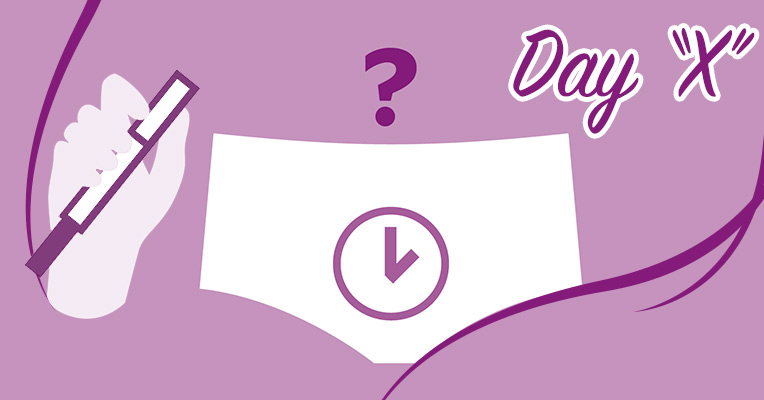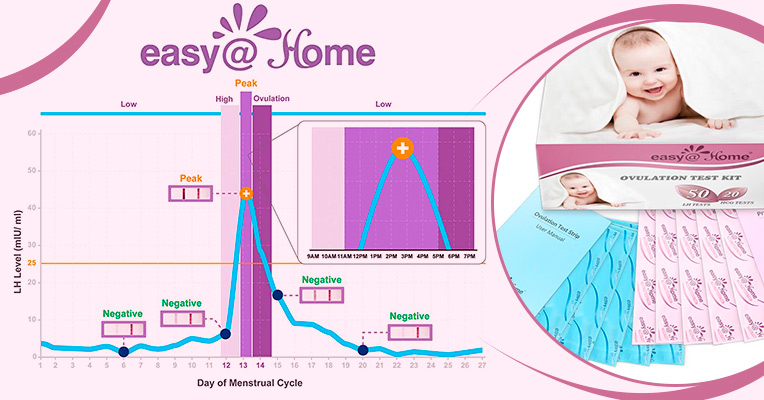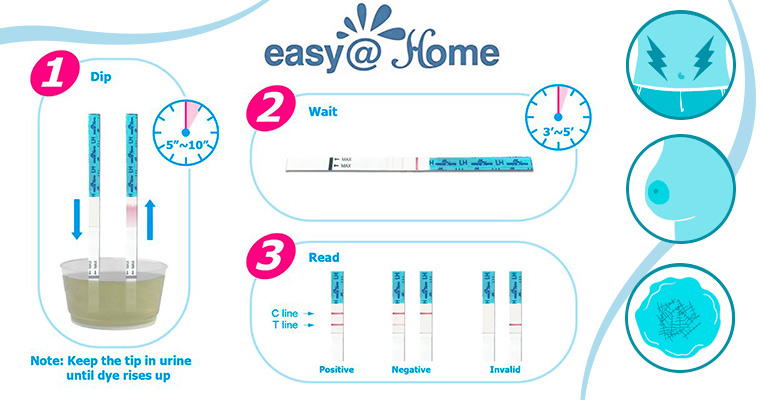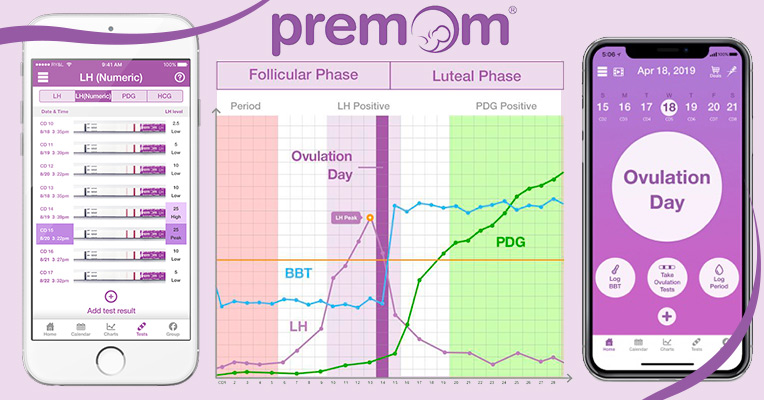As you probably know, ovulation is an essential part of women’s menstrual cycle. It happens when a mature egg from your ovary releases. After the egg is released, it goes down the fallopian tube where fertilization by a men’s sperm cell may occur. Ovulation normally happens once per each menstrual cycle. The egg cell lives for up to 24 hours after release, and if it’s not fertilised, the egg cell dies and your menstrual cycle moves to the next phase.
Science aside, when you’re ovulating, you’re the most fertile and accordingly the chances of becoming pregnant are the highest.
Is ovulation the only time when you can become pregnant? No. Although the egg can only be fertilised in 24 hours after release, sperm can live in your reproductive tract up to 5 days. So, even if you have sex in the said 5 days before ovulation (or right on the day of ovulation), you may easily conceive. The days leading up to ovulation along with ovulation itself make up the so-called “fertile window” that spans a 6-day period.
If you’re hoping to become pregnant, you may want to keep track of your ovulation. Knowing when you’re actually ovulating will help you become pregnant much quicker.
Many women mistakenly believe that ovulation happens strictly 14 days after the last period, but that’s not so. Timing of ovulation varies from woman to woman and largely depends on the length of the individual menstrual cycle. For example, if a woman has a standard 28-day menstrual cycle, she more likely than not ovulates between days 13 - 15. But not everyone has a textbook 28-day cycle. If your cycle ranges somewhere between 27 and 34 days, the ovulation may occur somewhere between 13 and 20 days. Moreover, the exact timing may even vary from month to month. That’s the reason why most women have no idea when they’re ovulating.
While the most accurate ways to confirm ovulation are the ultrasound in the doctor’s office or hormonal blood test, there’s a super accurate way to track your ovulation in the comfort of your own home - use an ovulation predictor kit.
One of the most accurate ways to predict ovulation is to use an ovulation home test also called an OPK (ovulation predictor kit). The ovulation test reacts to the luteinizing hormone in your urine, which reaches its peak amount 12–36 hours before the mature egg is released.
Luteinizing hormone (LH) heavily controls either men’s or women’s reproductive system. It’s produced and released in the anterior pituitary gland. And an acute rise of LH ("LH surge") triggers ovulation. Therefore, increased levels of this hormone mean that ovulation is coming soon. The LH is super-concentrated a day or two before ovulation.
Good ovulation tests accurately detect the surge in LH in your urine and tell when you’re approaching ovulation. Simply put, the test predicts the “sweet time” based on LH concentration in your urine. The kit usually has two lines - one is the control line (tells you whether the kit is valid or not) and the second line is the test line. When the second line is similar in colour to the control line, or even darker, LH is surging. It means that ovulation is imminent. Ovulation is likely to happen within the next couple of days.
Importantly, if a woman has regular periods but can’t become pregnant, this may happen because she is not ovulating at all. And an ovulation home kit can help you see whether you’re, in fact, ovulating.
Using ovulation test strips is very easy. If you have a regular 28-day cycle, it’s advisable to begin taking tests a few days before the expected time of ovulation - on day 11–12. If the test is negative, continue taking the tests until it becomes positive. Also, it’s recommended to do tests twice a day so as not miss the peak (but avoid using the first-morning urine).
The peak of the luteinizing hormone varies in duration and level from woman to woman. Sometimes, the peak time of luteinizing hormone is so short that it lasts only a few hours and, naturally, can be determined only during this swift period. So, if you want to track the LH surge, it’s better to do ovulation tests twice a day at the same time.
However, if your peak time is fairly long, one test will be enough. Anyways, you should check twice if you are going to use the test for the first time and don’t know how long the LH is concentrated in your body.
- Another recommendation is to keep down the water intake before taking a test. Try not to drink much water and do not urinate for about 3-4 hours before performing the test.
- Strictly follow the instructions - collect your urine in a clean container, put the test strip inside for up to 10 seconds, and check the result after 10 minutes.
- One line means a negative result for ovulation (the test is working).
- Two clear lines notify you that the ovulation will occur in 12–36 hours. Gynecologists recommend couples to plan sexual intercourse on the first day of the positive results and within the next 3 days.
As mentioned, ovulation tests are typically done a couple of days before the expected ovulation. But if your cycle is irregular, you may easily get confused and miss the right time. That’s why we give you some general calculations.
If your cycle is regular, the source data will be the following:
- The menstrual cycle lasts for 28 days;
- The luteal phase normally lasts for 12–14 days;
- Testing is recommended 3 days before ovulation.
28 – 14 – 3 = 11
That means you should begin testing from the 11th day of your cycle (start counting from the first day of your menstruation).
But irregular cycles make things a bit more complicated. You should determine your shortest cycle in the last half year and consider the current cycle as your shortest one.
For instance, your shortest cycle was 23 days. Considering that your luteal phase is stable and lasts for standard 14 days, you’ll get 23 – 14 = 9.
Based on this simple math, your expected ovulation will be on the 9th day of your cycle. Hence, you’d better start ovulation test 3 days before the day “X”, on the 6th day of the cycle.
If you’re not sure what test to buy, we offer you to consider the Easy@Home kit that includes 50 ovulation sticks and 20 pregnancy test strips. This ovulation detector kit has numerous positive reviews and is rated as one of the most trusted ovulation tests among customers.
Easy @ Home has been in the market for more than 18 years and all its products undergo strict quality control by dedicated inspectors. So, you can be sure you’ll always get reliable and accurate results, helping you to “catch” your LH surge.
Both pregnancy and ovulation strips deliver clear lines with quick results in 3-5 minutes. The ovulation test detects the LH hormone in your urine at the FDA standard level of 25 mIU/mL, while the pregnancy test detects the hCG hormone at the FDA standard level of 10 mIU/mL. Natural family planning has never been easier.
Both pregnancy and ovulation Easy@Home tests are extremely easy to use. You simply need to dip the test strip in a clean container with urine for a couple of seconds until you notice the dye rises into the result window. Once it happens, extract the strip and put it on any flat, dry surface. Wait for 3-5 minutes and check the results. The results will be super accurate up to 99%.
You can use the ovulation tests with other tools to double-check your results and better understand your ovulation and menstrual cycles. The symptoms that go alongside with ovulation may include some changes in vaginal secretions, changes in basal body temperature, light bleeding or spotting, breast tenderness, increased sexual drive, and even ovary pain characterised by discomfort on one side of your stomach. This pain is also called mittelschmerz and is associated with the middle of your menstrual cycle.
Along with the ingenious Easy@Home tests, you can get the Premom Ovulation Calculator app that will help you double check the test accuracy and not miss any peak. The main features of the app are as follows:
- You can upload images of your test strips in one place to track your results and get a better understanding of your ovulation cycle and patterns.
- The Premom app personalises to your very circle. In other words, even if you have an irregular cycle, the app is capable of predicting your ovulation 5 days in advance. The app combines multiple ovulation calculation methods in one smart platform: ovulation tests, BBT charts, and your personal period calendar. Hence, you’ll be able to plan intercourse when you are the most fertile.
- BBT Charting function. No more paper charting! No more confusion! Your temps will be automatically charted for you. Plus, your cover line will be constructed automatically as well. The only requirement for that is the Easy@Home smart basal thermometer that can seamlessly sync your results with no manual input.
- Period Tracker. Premom is one of the easiest and least time-consuming apps for period logging. Tap, drag, and save the period. It’s that easy.
To sum it all up, you get the best value if you use the Premom smart fertility app in conjunction with the Easy@home ovulation kit. Understanding your menstrual cycle and knowing your ovulation days, you’ll be able to get pregnant fast and naturally.
